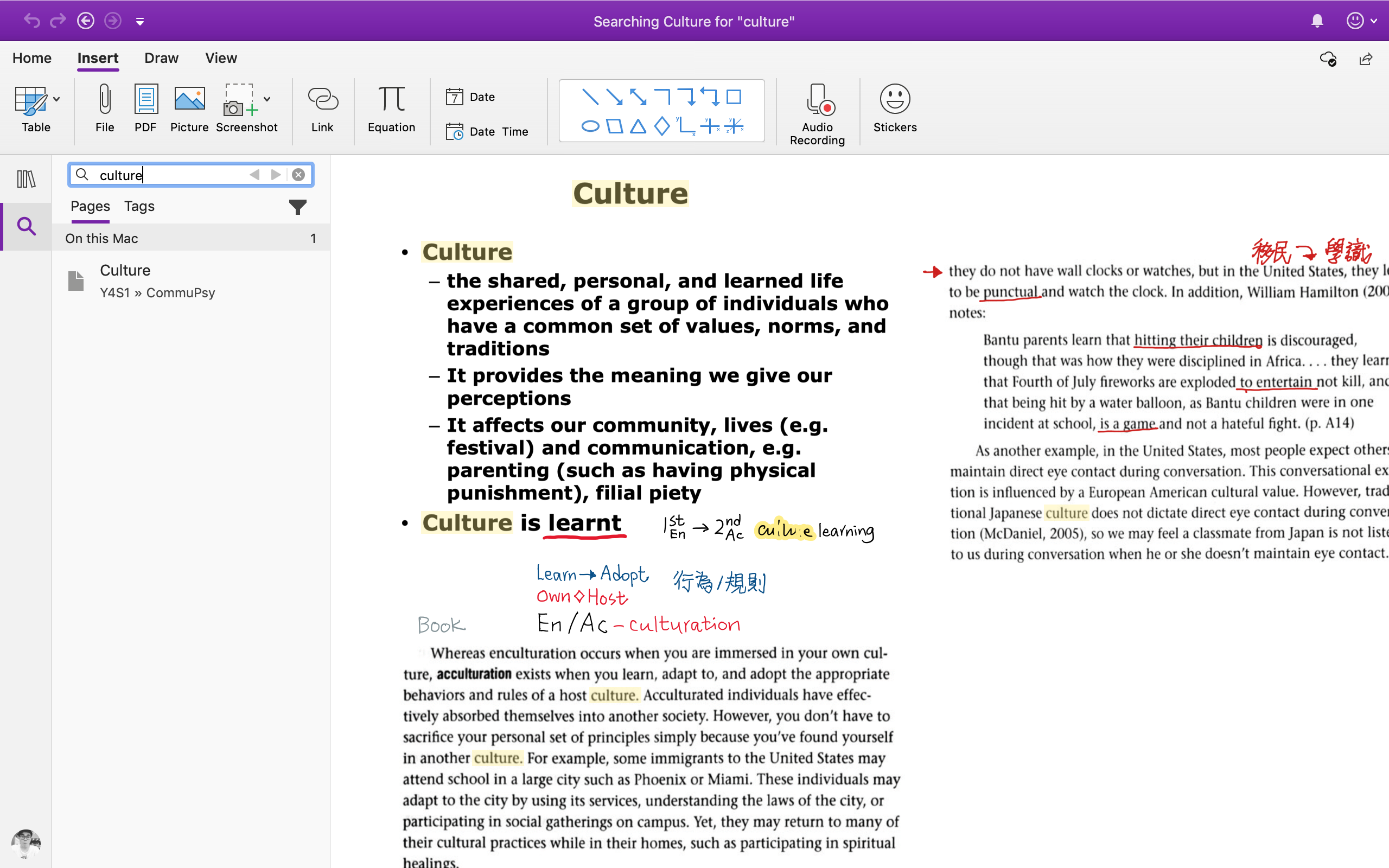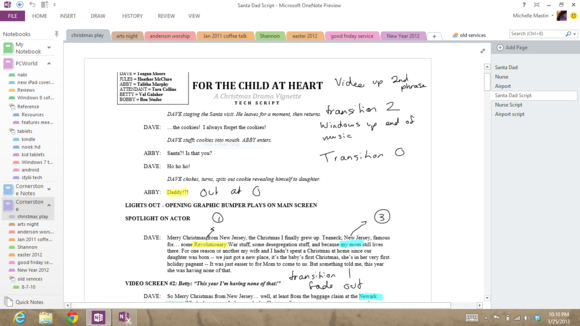The program uses Microsoft OneNote to organize your notes. The idea is this: the entire Bible, and everything connected with it (courses, sermons, books, etc.) is stored in OneNote. We have also added some cool features to help you with your note taking. First, the program allows you to open a passage of Scripture, making it very easy to navigate. OneNote is free on all platforms. You can take notes (and voice notes) with the Windows Desktop application and the apps on Windows Phone, Apple iPad, iPhone and Android. On the desktop app, you can take synced audio notes which are really great for meetings. Mix and match normal notes and audio notes. OneNote links your notes to the audio, so you can jump right to what was being said when you took each note. Create to-do lists and more OneNote was designed to be fast and flexible for text, to-do lists and tables. OneNote is part of Microsoft’s office suite, and an extremely versatile note taking and outlining application. It allows you to create rich notes which may include text, tables, formulas (OneNote 2010), tags, images, audio, and video recordings. In the OneNote app, you are able to create a page (or copy and paste) with the format of a Cornell Note-Taking page. To accomplish that, you will need to open an existing notebook with the template, then copy and paste the frame that has the template.
Having spent 15+ years in IT project management, I have an appreciation for the tools out there that make Project Management simpler and efficient. OneNote (yes, OneNote!) is such a tool. Today, I want to highlight the ways a project manager and project team members might use and adopt OneNote when managing projects within an organization.
It is important to note that OneNote by itself does not constitute a project management software. OneNote, in combination with SharePoint Site or Office 365 Group or Planner – will though. So when I talk about OneNote features below, the software is more of “assisting/facilitating” tool that complements the other tools in Office 365 eco-system.
1. Storing and sharing Agendas
OneNote can be great for storing Agendas for meetings. You can create a page for each meeting and name it accordingly.
Moreover, since OneNote, by default is part of all SharePoint sites and Office 365 Groups, you can use it to collaborate and co-author and easily ask your team members with adding items to an agenda for example.
2. Keeping Meeting Minutes
Meeting Minutes are another great piece of content belonging in OneNote. You can use the same OneNote page where you stored Agenda items above and record Meeting Notes, action items and other outcomes from the meetings keeping everything organized in one place. Alternatively, you can create another page for Meeting Minutes and organize it together with Agenda page above into a section.
If you are managing your projects using the Agile methodology, OneNote can become a great tool to keep track of these daily Scrum Meetings. I documented it in this post.
3. Storing Lessons Learned

Another great way to use OneNote is to capture Lessons Learned on a project. When I managed projects in the corporate world, I used to hold Lessons Learned sessions for every project that I managed. Mouse sparkles tumblr. It helped me avoid mistakes in future projects.
And then you can allow users to co-author and contribute to the document – essentially building a Lessons Learned database.
4. Organizing Risks in a Risk Register
Another cool way to use OneNote is to capture project risks. Typically, Risk Register is built in Excel, I also advocate for using a SharePoint custom list for this, but you can also use OneNote and either embed a table or Excel document right on the page.
5. Project Wiki
What really makes OneNote great – is that it can become an easy dumping ground (repository) for any content (images, audio, video, tables, hand-written notes, etc.) that otherwise would not be stored in any SharePoint document library. Command and conquer zero hour windows 7. You can use OneNote’s sections and pages to create a nice project Wiki! Blaupunkt tv setup. OneNote is fully searchable, so you can always search and find what you are looking for.
6. Links
Related to the Wiki above, you can use OneNote to organize and store various links (bookmarks, URLs). Alternatively, SharePoint is also a great place by itself to organize links too – so if that is of interest to you – click here.
7. Business Requirements
I have seen organizations use OneNote for business requirements gathering. Co-authoring capabilities would allow your team member to collaborate and gather requirements all in one place. Speaking of which, if you are thinking of gathering business requirements on SharePoint, you might want to read this.
Microsoft Onenote 2016 Tutorial Pdf
8. Status Reports
Oh yes, Status Reports! Who does not like them? Well, the truth of the matter is – nobody does, other than senior management. I remember when I managed projects in the corporate world, I absolutely hated putting them together. You spend hours on something that would take senior execs 1 min to read, only for them to make some stupid and unreasonable decision. Sorry, I digressed here. In any case, OneNote can become a great tool to expedite the development of those weekly Status Reports.
9. Action Items List
Take Notes Onenote Ios
Action Items is another piece of content that might be perfect for OneNote. Could be great for quick To-Do Lists that do not belong in the formal task list/schedule. The checklist (To Do functionality in OneNote) is amazing!
10. Emails
Did you receive an important email you want to become part of a project record? You can copy the whole email to any OneNote notebook with a click of a button.


